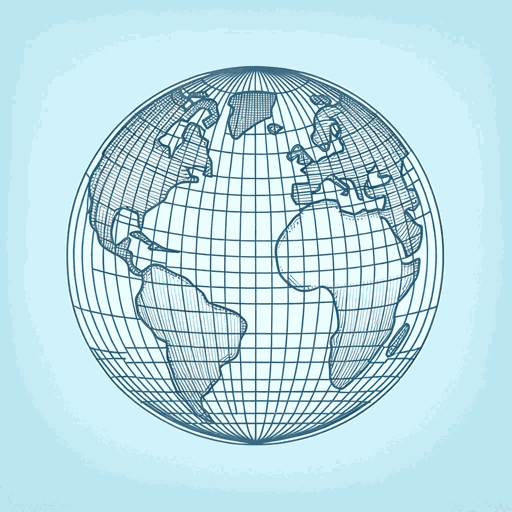44 pages • 1 hour read
Kao Kalia YangSomewhere in the Unknown World: A Collective Refugee Memoir
Nonfiction | Biography | Adult | Published in 2020A modern alternative to SparkNotes and CliffsNotes, SuperSummary offers high-quality Study Guides with detailed chapter summaries and analysis of major themes, characters, and more.
Summary and Study Guide
Overview
Somewhere in the Unknown World: a Collective Refugee Memoir (2020) is a collection of stories told to Hmong American author Kao Kalia Yang by refugees from across the world now living in Minnesota. Yang is intimately familiar with the issues facing refugee communities: She was born in a refugee camp in Thailand after her family was displaced by war in Laos. The collection is her attempt to collect and preserve the stories of other people displaced by violence. The collection addresses themes such as The Importance of Community in Times of War or Displacement, The Unique Challenges of War and Displacement for Women and Children, and The Necessity and Pain of Remembrance.
This guide is based on the 2020 Metropolitan Books e-book edition.
Content Warning: The source material contains depictions of genocide, war, displacement, miscarriage, infant death, racism, xenophobia, depression, and other mental health conditions.
Summary
“From Irina to Irene” tells the story of Irene (formerly Irina) Ruderman Clark, whose Jewish family fled Minsk shortly after her 11th birthday. She describes the difficulties of coming of age in a time of war and the importance of the Jewish diaspora in Europe and America. Irina celebrates her 12th birthday in Minnesota.
“The Strongest Love Story” describes the separation of Awo Ahmed’s family during the Somali war. Visa difficulties result in only Awo and her oldest siblings immigrating to the United States: her father and younger siblings stay in Somalia. Their weekly phone calls with her father remind Awo of her family’s strength.
“Adjustments to the Plan” is narrated by Yara Hassan, whose family is separated when her father, the Syrian national judo coach, immigrates to America. Yara travels with her mother and siblings to Turkey, where her mother falls ill. The illness forces Yara to mature quickly, and she is an adult when her family is reunited.
“Up Close, It Is Different,” is narrated by Majra Mucić Gibbons, an aid worker who grew up in Bosnia during the war. Her father joined the army in the place of a Christian friend who, he believes, would have been killed by fellow soldiers. Majra feels she is called to work in the humanitarian field.
In “When the Rebels Attacked,” Siah Borzie describes her family’s experience during the Liberian Civil War. Displaced from their comfortable home in a factory town by rebel violence, Siah and her family live for months in the Liberian bush with other displaced families. They leave the bush grateful that things had not been worse.
“Leaving with No Good-byes” is narrated by Kaw Thaw, a Burmese ethnic minority who leaves his parents’ village to start his own life in a Thai refugee camp. After meeting a woman and having three sons, Kaw leaves the refugee camp to work in Bangkok as a translator. He never returns, and leaves Thailand after marrying an American aid worker with whom he has a child.
“In The Valley of Peace” is narrated by Hawra Alnabi, an Iraqi Shia Muslim whose family is displaced during the second Gulf War. After her grandfather is murdered, Hawra’s family fleas to a refugee camp in Saudi Arabia. In the United States, her family faces Islamophobia following the terror attacks on September 11, 2001.
In “Certificate of Humanity,” Afghanzada Achekzai details how her family is twice displaced from Afghanistan: first, during the Soviet-Afghan war, then again during the American war in Afghanistan. His experiences as a refugee cause him to first question, then emphatically affirm his humanity.
“Officially Unconfirmed” tells the story of Michael Tesfay, an Eritrean man who grows up believing his grandmother is his mother after his real mother dies of malaria. After witnessing massacres in Eritrea, he flees to Sudan, where he witnesses doctors fighting an unacknowledged cholera epidemic.
“Natalis: Same Old Tired World” describes an elderly refugee’s battle with depression. After years of sacrificing for her family, Chue Moua struggles to find proper care for herself. The chapter begins in the third person, and ends in first.
In “Sisters on the Other Side of the River,” Fong Lee, a refugee and former CIA interrogator, describes his family’s journey across the Mekong River from Laos into Thailand. He is haunted by the memory of two orphaned girls he could not save.
“A Burial and a Birth” tells the story of Sanouthith, a Lao woman with cancer, and her daughter, Saymoukda. The narrative weaves together their memories as Sanouthith slowly dies and Saymoukda becomes a new mother.
“Revival” describes the immigrant business community on University Avenue in Minneapolis-St. Paul. In 2007, Hai Tuong buys and renovates his father’s old restaurant, which had been a part of the community’s revitalization in the 1980s.
“Never Going Home Again” is narrated by Tommy Sar, the disabled son of a Cambodian immigrant. When Tommy is seven, his parents send him from Minnesota to California to live with family better able to care for him. Tommy feels like a refugee in California.
The final chapter, “For My Children,” is narrated by the author Kao Kalia Yang, and addressed to her children. She outlines the global conflicts that brought her and her husband to Minnesota, and reveals the personal ties connecting her to the other stories in the collection.
Related Titles
By Kao Kalia Yang
Featured Collections
Asian American & Pacific Islander...
View Collection
Common Reads: Freshman Year Reading
View Collection
Community
View Collection
Contemporary Books on Social Justice
View Collection
Family
View Collection
Immigrants & Refugees
View Collection
The Best of "Best Book" Lists
View Collection
War
View Collection



